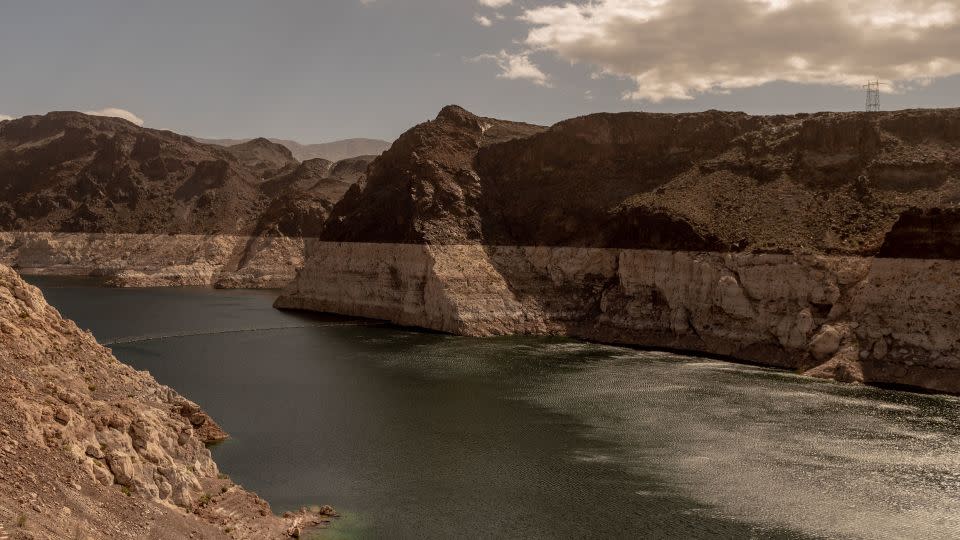Water-guzzling ‘hot drought’ in the West is unprecedented in at least 5 centuries, study suggests

- Oops!Something went wrong.Please try again later.
The West’s recent heat-driven megadroughts are unprecedented in at least 500 years, new research shows.
“Hot drought” — when extreme drought and heat occur simultaneously — has increased in severity and frequency over the last century due to human-caused climate change, according to a study published Wednesday in the journal Science Advances.
“What we’re seeing is that megadrought conditions are being amplified by anthropogenically driven (human caused) temperature increases,” said Karen King, lead author of the study and assistant professor in physical geography at the University of Tennessee in Knoxville.
Wednesday’s study builds on previous research, including one study that found the last two decades in the West have been the driest in 1,200 years, and the human-caused climate crisis made the yearslong dry spell 72% worse.
Both studies used tree ring data, which can serve as scientific time capsules as they are affected by sunlight, rainfall and temperature, allowing researchers to reconstruct the past.
While the previous study measured the length and width of the tree rings to gauge drought conditions, King’s research analyzed the density of the rings to measure how temperatures changed over time.
“More dense rings mean warmer temperatures, and less dense rings mean cooler temperatures, typically,” King explained.
She spent the last few years driving around the Pacific Northwest and the Interior Mountain West, including parts of Utah, Arizona and Colorado, to measure different tree species.
After collecting tree ring data to analyze summer maximum temperatures across the region from 1553 to 2020 as well as existing historical drought records, King and her team were able to corroborate that the last two decades have been among the hottest years on record in at least five centuries across much of the western US.
“It wasn’t that surprising, but when you put the two (studies) together, it paints a very cohesive picture that this anthropogenic influence on increased hot drought, particularly in the Southwest, is unprecedented over the last several centuries.”
While droughts have frequented the West in the past, researchers say the effects are much more pronounced today due to alarmingly high temperatures. And the water supply has taken a large hit.
According to the study, the regions most affected by hot droughts include the Great Plains, which contain the Ogallala aquifer — one of the country’s largest that supports nearly 25% of the region’s agriculture — and portions of the Colorado River Basin, which has been plagued by extreme drought and overuse in recent decades.
Jonathan Overpeck, climate scientist and dean of the University of Michigan’s School for Environment and Sustainability, told CNN the implications are huge if the climate crisis accelerates.
“Water security and wildfire will become bigger problems until climate change is stopped,” said Overpeck, who was not involved with the study but has done research on hot droughts. “These impacts were predicted long ago and are now becoming clear.”
For more CNN news and newsletters create an account at CNN.com

